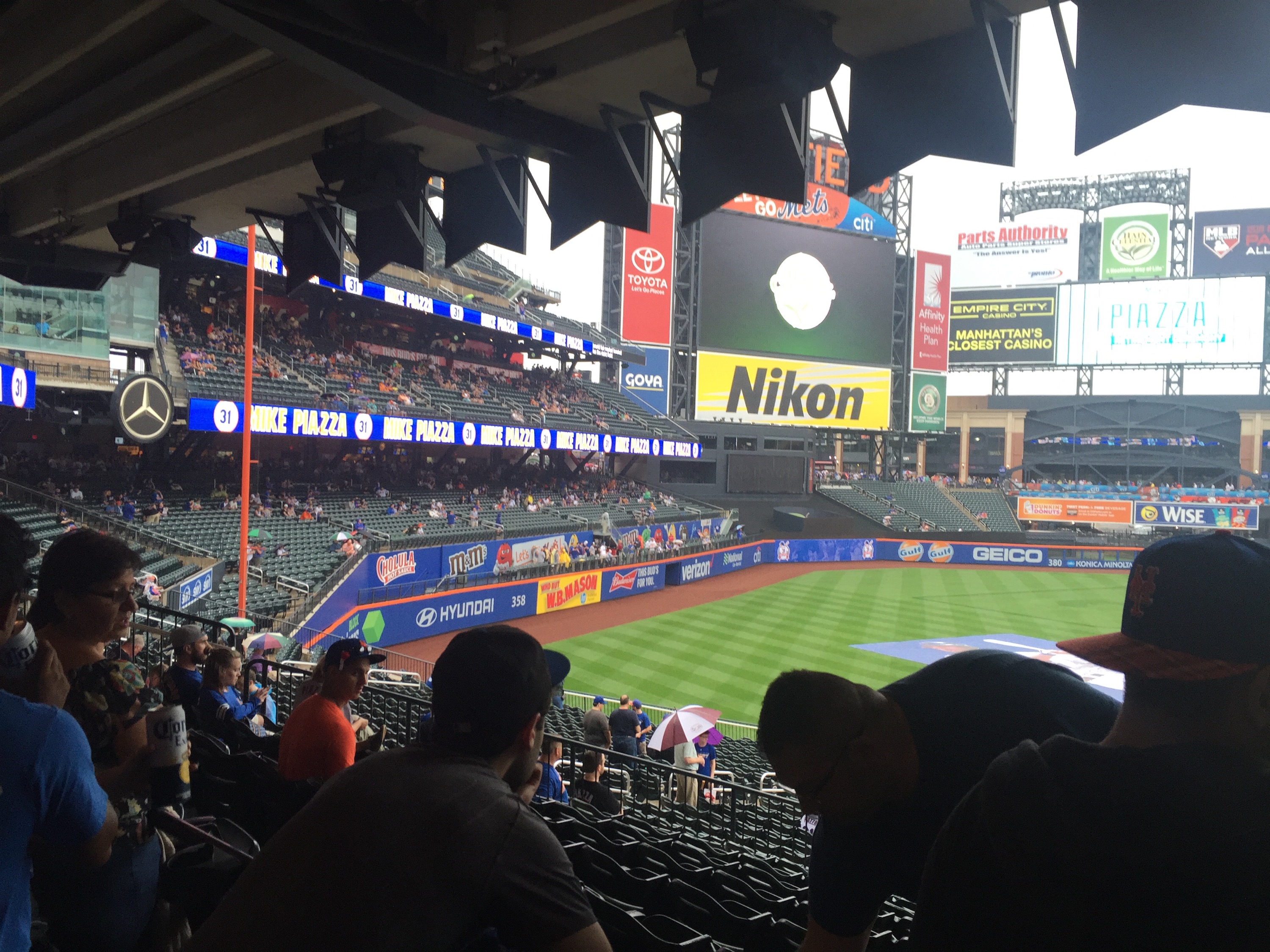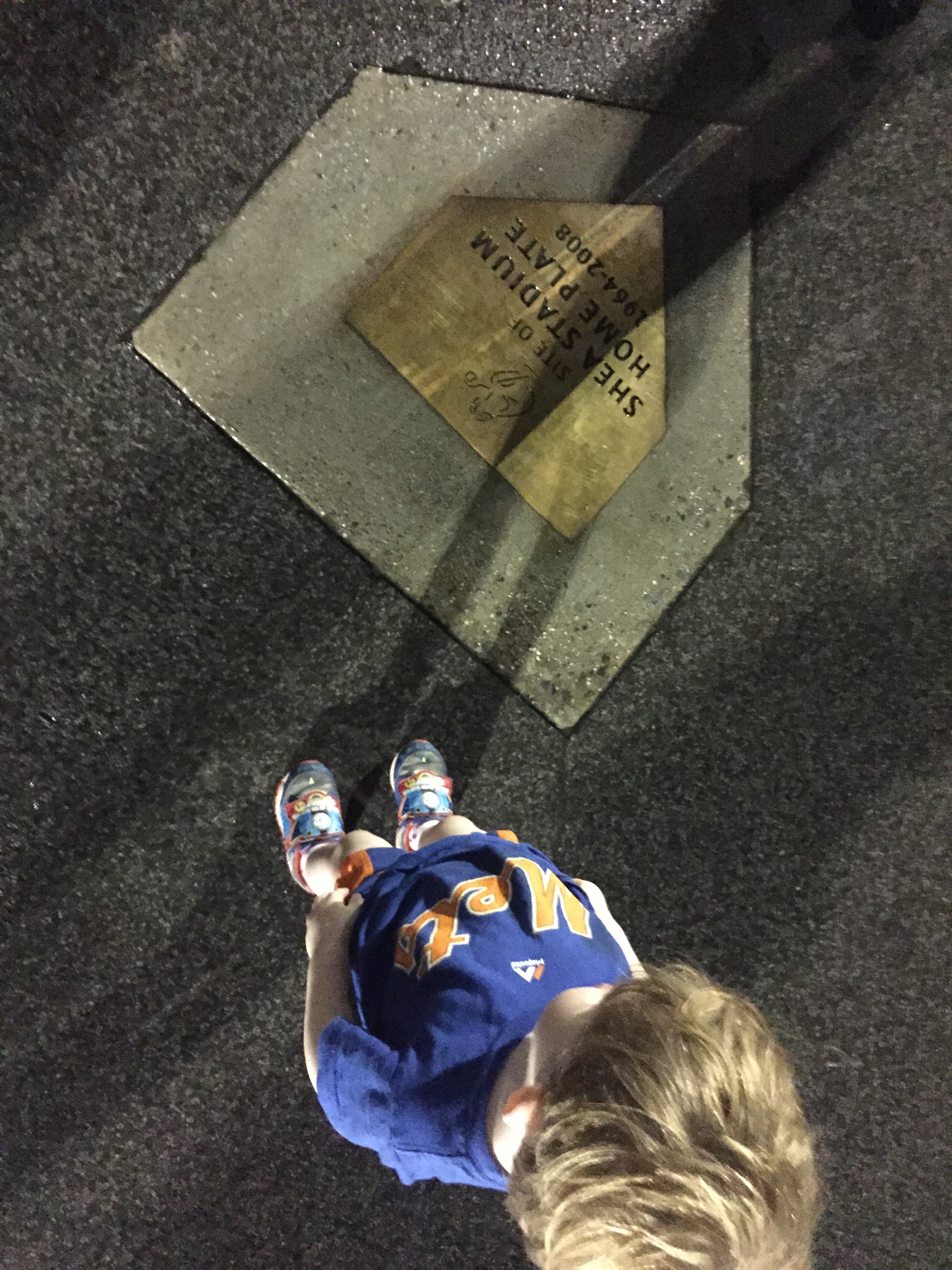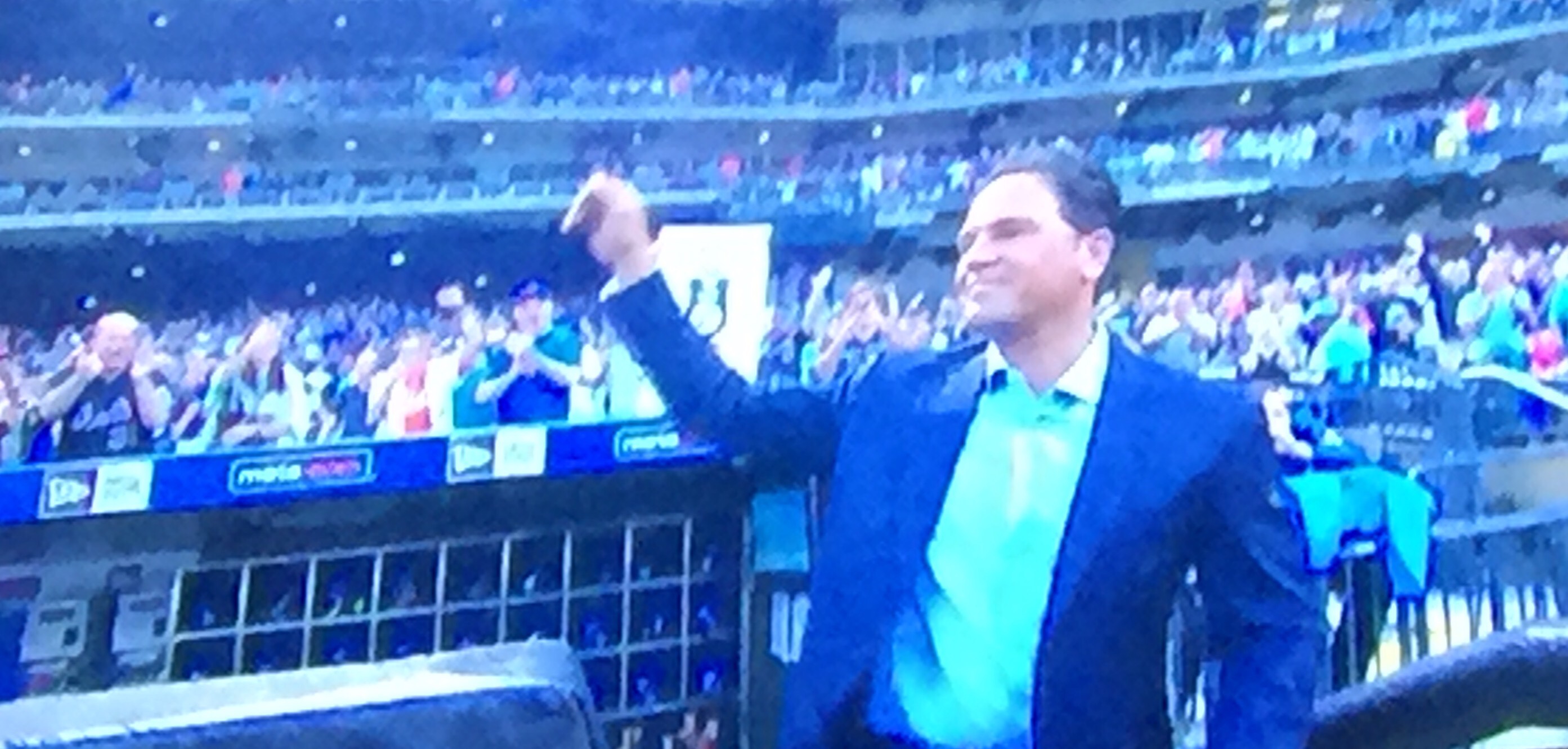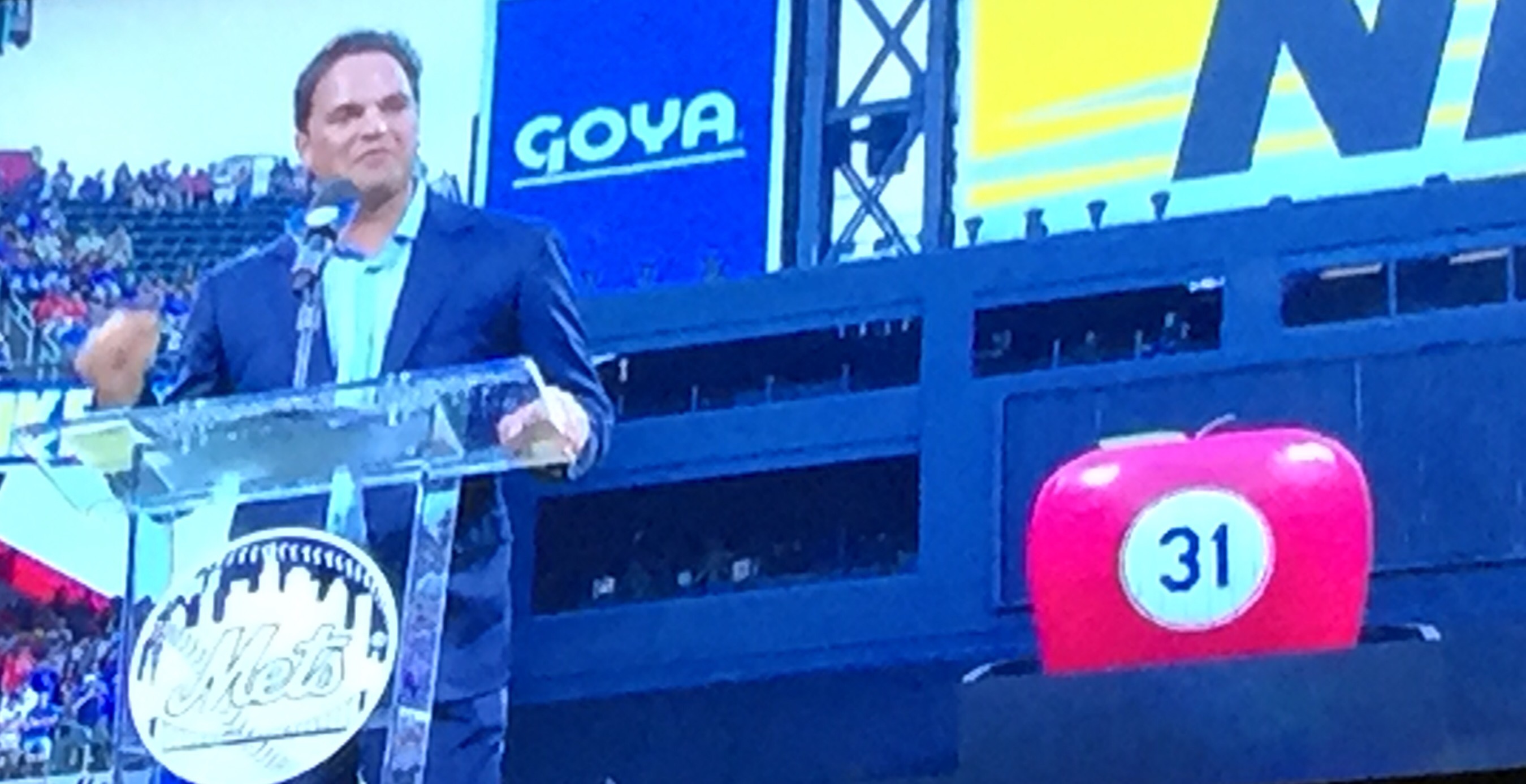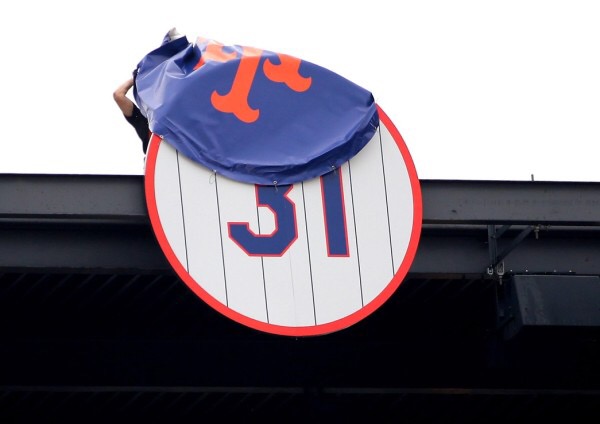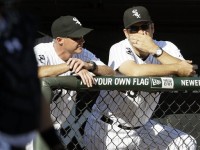Robin Ventura
There are many factors to consider when voting for a candidate today. At this point, they have all be regurgitated and discussed at length, and hopefully, you have made your decision based upon sound criteria. However, if you are looking for a reason to change your mind or reason to have your mind made up for you, or you really want to base this important decision on how the Mets have fared with a Republican or a Democrat in office, you are in luck. Here is how the Mets have performed under each President in their 54 year history:
| President | Seasons | Record | Win % |
| John F. Kennedy | 1962 – 1963 | 91 – 231 | 0.283 |
| Lyndon B. Johnson | 1964 – 1968 | 303 – 506 | 0.375 |
| Richard M Nixon | 1969 – 1974* | 478 – 433 | 0.525 |
| Gerald R. Ford | 1974* – 1976 | 263 – 277 | 0.487 |
| Jimmy Carter | 1977 – 1980 | 260 – 388 | 0.401 |
| Ronald Reagan | 1981 – 1988 | 662 – 573 | 0.536 |
| George H.W. Bush | 1989 – 1992 | 386 – 423 | 0.477 |
| William Jefferson Clinton | 1993 – 2000 | 562 – 506 | 0.526 |
| George W. Bush | 2001 – 2008 | 651 – 643 | 0.503 |
| Barack Obama | 2009 – 2016 | 630-666 | 0.486 |
* Nixon resigned from office August 9, 1974
Here are the cumulative results:
| Party | Record | Win% |
| Democrat | 1,846 – 2,297 | 0.446 |
| Republican | 2,440 – 2,349 | 0.510 |
Here are some interesting Mets postseason facts when there was a Democrat or Republican in the White House.
Democrat Postseason Facts
- The two times the Mets have been to back-to-back postseasons was when there was a Democrat in the White House (1999 & 2000 – Clinton; 2015 & 2016 – Obama)
- The Mets have only had an NLCS MVP when there was a Democrat in the White House (Mike Hampton – 2000; Daniel Murphy – 2015)
- The Mets have only won the division once (2015) with a Democrat in office. The other three postseason appearances were as the Wild Card.
- The Mets have appeared in four total postseasons and two World Series. The Mets are 21-17 in postseason games with the following records per round:
Wild Card Game 0 – 1 NLDS 9 – 4 NLCS 10 – 4 World Series 2 – 8
Republican Postseason Facts
- The Mets have won their only two World Series with a Republican in office (1969 – Nixon; 1986 – Reagan)
- In all five of their appearances in the postseason with a Republican in office, the Mets were the National Leauge East champions.
- In three of the five appearances, the Mets won 100+ games with the high water mark coming in 1986 with 108 wins
- In four of the five seasons the Mets appeared in the postseason with a Republican in office, the Mets had the best record in the National League (1973 is the exception). In two of those seasons (1986 & 2006), the Mets had the best record in baseball.
- In total, the Mets have appeared in five postseason and three World Series. The Mets are 30-20 in those postseason games with the following records per round:
NLDS 3 – 0 NLCS 16 – 12 World Series 11 – 8
If you wish to mainly focus on player performance over how the team has fared during each administration, Mets players have received more awards during Republican leadership:
Cy Young Award
- Republican 4 (Tom Seaver 1969, 1973, & 1975; Dwight Gooden 1985);
- Democrat 1 (R.A. Dickey 2012)
Rookie of the Year
- Republican 3 (Seaver 1967; Jon Matlack 1972; Darryl Strawberry 1983; Gooden 1984)
- Democrat 1 (Jacob deGrom 2014)
Rolaids Relief Man
- Republican 2 (John Franco 1990; Armando Benitez 2001)
- Democrat 0
Sports Illustrated Man of the Year
- Republican 1 (Seaver 1969)
- Democrat 0
Gold Gloves
- Republican 14 (Tommie Agee 1970; Bud Harrelson 1971; Keith Hernandez 1983 – 1988; Ron Darling 1989; Carlos Beltran 2006 – 2008; David Wright 2007 – 2008)
- Democrat 6 (Doug Flynn 1980; Rey Ordonez 1997 – 1999; Robin Ventura 1999; Juan Lagares 2014)
Silver Sluggers
- Republican 14 (Hernandez 1984; Gary Carter 1985 – 1986; Strawberry 1988; Howard Johnson1989 & 1991; Mike Piazza 2001 – 2002; Jose Reyes 2006; Beltran 2006 – 2007; Wright 2007 – 2008)
- Democrat 5 (Piazza 1998 – 2000; Edgardo Alfonzo 1999; Hampton 2000)
Roberto Clemente Award
- Republican 2 (Carter 1989; Carlos Delgado 2006)
- Democrat 2 (Al Leiter 2000; Curtis Granderson 2016)
From the Front Office side, Republicans have a 2-1 edge in executive of the year with Johnny Murphy winning in 1969, Frank Cashen winning in 1986, and Sandy Alderson winning in 2015. Baseball America named the Mets the top organization in baseball once in a Republican (1984) and once in a Democratic (1995) term.
As a general rule of thumb, the Mets and their players have performed better with a Republican in office. As you enter the voting booths today, take that as you will. Hopefully, you have more sound criteria for choosing your candidate.
The only thing we know right now about Mike Piazza‘s retired 31 is that it is going to be in the Left Field Legends Landing in front of Tom Seaver‘s number 41.
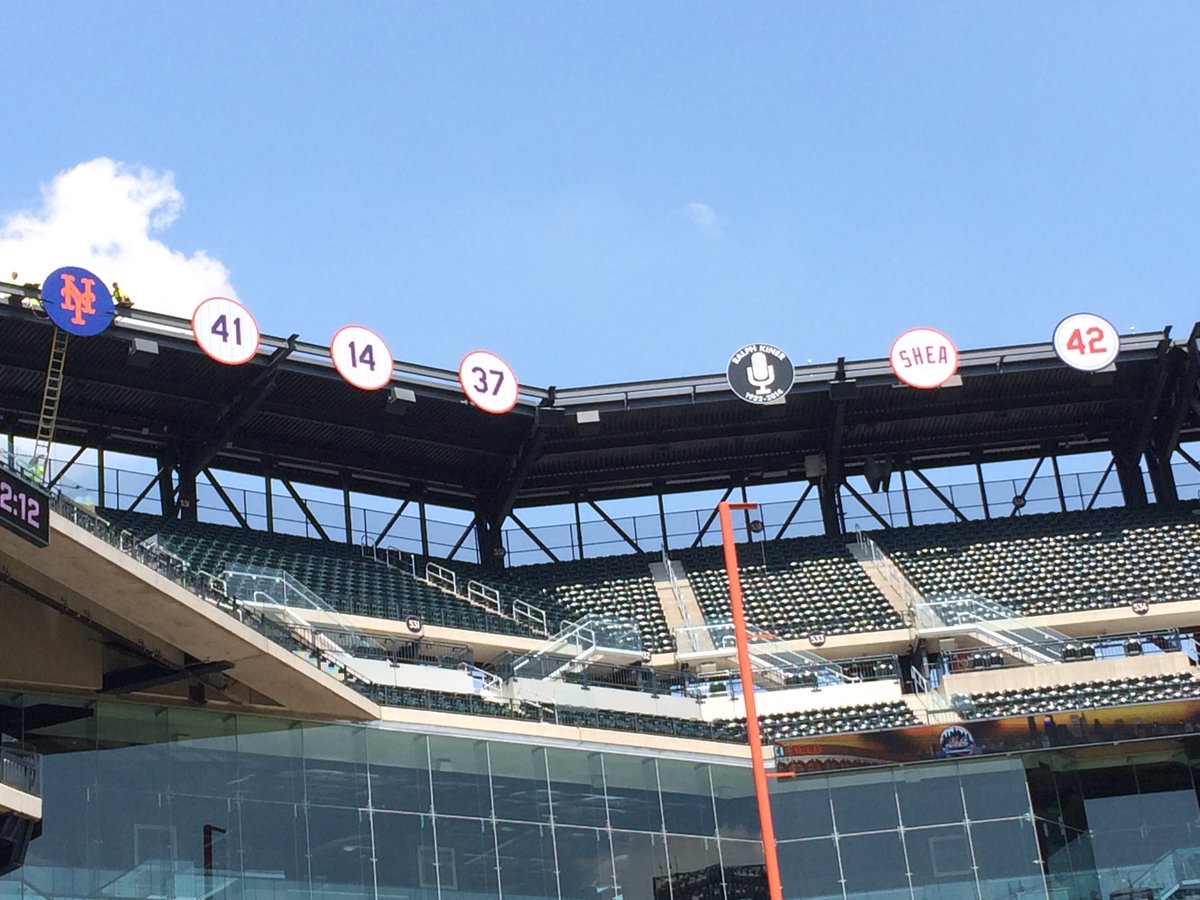
* Photo courtesy of Jeremy Posner
For whatever reason, the Mets are changing how the retired numbers are displayed. It used to be in the order the numbers were retired, and now with Piazza’s ceremony on the horizon, the Mets have changed it to reverse order. It’ll be interesting to see if that is how it remains. What is also interesting is that the Mets have tipped their hands, and they have shown that they are going to do a “uniform” display of the retired numbers:

What is interesting about that is Piazza never specifically wore that jersey. Sure, the Mets would occasionally wear pinstripes during Piazza’s tenure with the Mets, but when they did the number had a dropshadow.
Instead of the jersey number as the Mets will most likely display it, the Mets should have gone with the black jerseys to represent not just Piazza, but also the specific Mets era in which he played:
That’s the jersey Piazza wore in his first playoff game with the Mets (road version of the black jerseys in Game 1 of the 1999 NLDS). It was a game the Mets won highlighted by an Edgardo Alfonzo grandslam. It was the jersey he was wearing when Robin Ventura hit the Grand Slam single. It was the jersey he wore when he hit the three run homer to cap a 10 run eighth inning rally that saw the Mets overcome an 8-1 deficit against the hated Braves. It was the jersey he wore when the Mets won the 2000 Pennant. It was the jersey he wore when he broke Johnny Bench‘s record for most home runs by a catcher. And yes, it was the jersey he wore when he hit the post 9/11 home run.
Overall, if you conjure up your favorite moment of that era or of Piazza in a Mets uniform, chances are the Mets were wearing the black uniforms. It doesn’t really matter that Piazza wore the snow white jerseys more than any other jersey. The Mets need for symmetry should not outweigh properly representing history, and remember, it was their idea to have the black jerseys in the first place. Instead, the 31 that will forever hang in the Left Field Legends Landing should be the Mets black jersey as that is the jersey that most fans associate with Piazza.
Unfortunately, that is not what is going to happen, and with it the Mets will fail to properly reflect their history.

Being a father while being a big leaguer must be extremely difficult. You are effectively on the road nine months out of the year.
That’s why we hear stories about how players like bringing their kids around whenever possible. There are the stories of Ken Griffey, Jr. and Barry Bonds hanging around their Dad’s clubhouses. There was Dusty Baker’s son acting as the bat boy during the 2002 World Series. Now, we have the story of Adam LaRoche and his son.
LaRoche has historically had his son hang around during Spring Training. His son would get his own locker allowing him to hang out with his dad. With LaRoche’s job as a baseball player, this is making up for lost time. After Spring Training is over, LaRoche is on the road the rest of the year. He goes from city to city. He plays night games and gets home late. This is his best chance to spend quality time with his son. While you normally can’t put a price on that, LaRoche did. He determined this was worth more than $13 million.
Before signing with the White Sox last year, Robin Ventura told LaRoche he would have no problem with LaRoche’s son hanging around the clubhouse. In fact, LaRoche’s son had his own locker during the regular season so he could hang out during home games. At no time was LaRoche’s son a distraction. That didn’t prevent the White Sox front office from asking LaRoche to only bring his son around only half the amount of time. Instead, LaRoche decided to retire. He would rather retire than spend less time with his son.
The front office decision did not sit well with the players. As Karl Ravech said on Mike & Mike this morning, the White Sox players threatened to boycott yesterday. They were not going to take the field for practice. They were not going to play in Spring Training games. It wasn’t until Robin Ventura interceded that the disgruntled players finally agreed to go out there for practice and play in Spring Training games.
Every take I see is that there’s no bad guy in this situation. I disagree. When the players show a united front here, it’s the front office that’s the bad guy. We can have an honest debate as to whether children belong in the clubhouse at all. We can have an honest debate as to whether LaRoche’s son was in the clubhouse too frequently. However, the front office made a very poor decision here.
First, the front office caused the retirement of their first baseman. Second, it almost caused a team mutiny. Third, it undermined the manager who is in charge of the clubhouse. There is no scenario in which you can look at this decision and say it was the right decision.
Strange enough, the only good thing that arose from this situation was seeing how well Robin Ventura handled the situation. He kept control of the team and the clubhouse with an angry team on the verge of a boycott. He showed himself to be a strong leader who is respected by his team. Seeing this, maybe the front office should’ve allowed Ventura to handle this whole situation.
They didn’t, and now they are down a first baseman.

It’s that time of the year when we get that warm and fuzzy feeling. It’s a time when you feel even closer to what you love. I am of course referring to Pitchers and Catchers reporting to Spring Training this week.
As the Mets report, they are trying to do something that only Bobby Valentine’s Mets have ever done. They are trying to go to the postseason for consecutive years. It’s still amazing to think that in the 54 year history of the Mets, they have only e been in consecutive postseasons only once. Gil Hodges couldn’t do it. Davey Johnson couldn’t. Willie Randolph came agonizingly close.
No, the only one to do it was Bobby V. He did it with a core of Mike Piazza, Edgardo Alfonzo, Robin Ventura, and Al Leiter. He had a terrific bullpen of Armando Benitez, John Franco, Turk Wendell, and Dennis Cook. Each year, he had drastically different outfields and rotations. Yet, he was still able to make it work. He got the most out of these teams. The Mets made consecutive NLCS appearances, and they were close to winning a World Series.
This now is the task set forth for Terry Collins. For the first time in 16 years and the second time in Mets history, he is tasked with leading a Mets team to consecutive postseason berths. Like Bobby V, he has a strong core of players. Unlike Bobby V, he has not had much turnover in the roster.
Overall, the one thing uniting Bobby V’s Mets and Terry Collins’ Mets is hope. Mets fans hope and believe in this team. We all believe this is our year even after a heartbreaking loss. And yes, as this is Valentine’s Day, Mets fans love their team.
So remember on this the coldest of Bobby Valentine’s Day, Spring is in the air, and we will soon be reunited with the team we love.
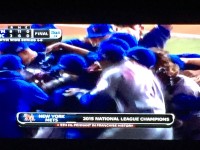
My favorite Mets team was the 1999 team. I loved everything about that team from Bobby V to Mike Piazza to Edgardo Alfonzo to Robin Ventura to John Olerud. It was my first real taste of a pennant race and the playoffs. I was lucky to be there for Pratt’s All Folks and the Grand Slam Single. I look back on the year with melancoly because of this:
In 2000, the Mets got Mike Hampton. The season became World Series or bust. A strange feeling for a Mets fan. Hampton would deliver. He was the NLCS MVP. The Mets then had to face the Yankees in the World Series. It was a cruel series with Todd Zeile‘s ball landing on the wall and falling back into play. Timo Perez didn’t run and didn’t score. Roger Clemens threw a bat at Piazza and wasn’t ejected. The series then ended in the most heartbreaking way possible:
The Mets would be terrible for the next few years, but everything came together in 2006. Our homegrown stars, Jose Reyes and David Wright, we’re becoming superstars. They were joined by the two Carloses: Carlos Beltran and Carlos Delgado. It was a team that ran roughshod over the National League. Beltran was the best baseball player on the planet that year (who somehow didn’t win the MVP). The Mets had momentum in Game Seven with Endy Chavez’s catch. Here’s how that season ended:
In 2007, the Mets reloaded and were primed to go back to the World Series. They were up 7 with 17 to play. On the final game of the season, they sent future Hall of Famer Tom Glavine to the mound with his 300 wins. He wouldn’t be devastated when he got out of the first, but we would:
In 2008, the Mets diagnosed their problem, and much like 2000, they went out to get it. The Mets brought in Johan Santana, and he delivered. they needed him in a strange year that saw Wille Randolph fired after a win on the first game of a west coast trip. The interim manager threatened to cut Reyes if he didn’t come off the field after pulling up lame, and people acted like it was a good thing. Through all of that, the Mets were collapsing again, and yet an injured Santana took the ball on three days rest. He saved the season, but only for a day:
The last three were the most difficult for me because I was there. It got more difficult because Citi Field was initially a disappointment. It got worse because the product on the field was bad.
Then Matt Harvey came up and was an All Star. Jacob deGrom came from seemingly nowhere to become a Rookie of the Year and an All Star. They were joined by Noah Syndergaard. The Mets made a flurry of trades including one for Yoenis Cespedes. Daniel Murphy had an out of body experience. Then this happened:
All that pain. All that suffering. We know what it’s like to be Mets fans. There’s pain and suffering. However, there are moments of pure joy. It’s all the losing that makes nights like last night all the more special.
We’re Mets fans. We were there for all of this. There are older fans who experienced more pain, but also more joy. There are younger fans who only know losing. Now, we’re all Pennant Winners. It’s like the 80’s again when the Mets are the best team of baseball. We’re “Back in the New York groove!”
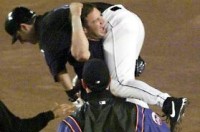
Rarely, if ever, do you see the Mets go all-in on a season. In fact, the only time I remember it happening was 1999 when Steve Phillips traded everyone to try to improve the team after just missing out on the playoffs in 1998.
Watching that 1999 team was probably the most fun I had watching baseball. With that season came so many highlights including the Al Leiter two-hitter in the Wild Card play-in game, Pratt’s All Folks, and the Grand Slam Single. The season ended cruelly with Kenny Rogers . . . .
If you remember, that year the Mets gave away Jason Isringhausen for Billy Taylor. As we know Taylor had no regular season impact and was left off the playoff roster. It also saw Octavio Dotel get called up too soon and stay in the majors too long to the tune of a 5.38 ERA. He was warming in the bullpen when Kenny Rogers . . . .
This year, the Mets are seemingly all-in like they were in 1999. They gave up their two best prospects who have not appeared in the majors this year. In exchange the Mets received two and a half months of Tyler Clippard and Yoenis Cespedes, who is leaving as a free agent. Because of deplorable offense, Michael Conforto was rushed to the majors, and the Mets won’t send him back down.
Look, I understand going all-in. It led to a run in 1999, and to a certain extent 2000. However, in order to go all-in, you don’t hedge your bets.
For starters, that means ending the innings limits nonsense. First of all, the underlying theorem was proven incorrect. Second, the rotation is set up nicely the rest of the year if it’s left unadulterated. Third, Steven Matz must go to the bullpen upon his return from the DL.
If the Mets make the playoffs, he will be in the bullpen anyway (if he makes the postseason roster). He can be like the 2006 Adam Wainwright or the 2008 David Price out there. This will help him and the Mets. If you put him in the rotation, you mess up the rotation and you endanger the opportunity that Matz can be effective in the postseason as a reliever.
If the Mets are truly all-in as their trades and treatment of Conforto suggest, Matz will be a reliever. If the Mets put him in the rotation and try spot starts or a six man rotation in September, then they should’ve sent down Conforto. You can’t go half way in being all-in.
Let’s hope no matter what they do, it works out to their benefit. Let’s also hope we’re talking potential postseason roster moves instead.
